4,4,4-Trifluoro-1-phenyl-1,3-butanedione
Synonym(s):BTA
- CAS NO.:326-06-7
- Empirical Formula: C10H7F3O2
- Molecular Weight: 216.16
- MDL number: MFCD00000425
- EINECS: 206-307-8
- SAFETY DATA SHEET (SDS)
- Update Date: 2023-04-27 16:27:43
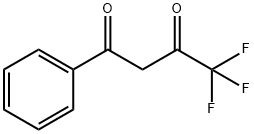
What is 4,4,4-Trifluoro-1-phenyl-1,3-butanedione?
Chemical properties
WHITE TO YELLOW CRYSTALLINE LOW MELTING SOLID
The Uses of 4,4,4-Trifluoro-1-phenyl-1,3-butanedione
4,4,4-Trifluoro-1-phenyl-1,3-butanedione was used in the synthesis of series of NNO ketoimines bearing trifluoromethyl substituents via Schiff base condensation reaction. It was also used in mixed-ligand chelate extraction of trivalent lanthanides and as a ligand in the preparation of ternary lanthanide (Ln) complexes.
Properties of 4,4,4-Trifluoro-1-phenyl-1,3-butanedione
| Melting point: | 38-40 °C(lit.) |
| Boiling point: | 224 °C(lit.) |
| Density | 1,113 g/cm3 |
| Flash point: | 210 °F |
| storage temp. | Sealed in dry,Room Temperature |
| solubility | 95% ethanol: soluble25mg/mL, clear, colorless to yellow |
| form | Crystalline Low Melting Solid |
| pka | pK1: 6.35 (25°C) |
| color | White to yellow |
| Water Solubility | Sparingly Soluble in water (0.24 g/L) (25°C). |
| BRN | 1875083 |
| CAS DataBase Reference | 326-06-7(CAS DataBase Reference) |
| EPA Substance Registry System | 1,3-Butanedione, 4,4,4-trifluoro-1-phenyl- (326-06-7) |
Safety information for 4,4,4-Trifluoro-1-phenyl-1,3-butanedione
| Signal word | Warning |
| Pictogram(s) |
 Exclamation Mark Irritant GHS07 |
| GHS Hazard Statements |
H302:Acute toxicity,oral H315:Skin corrosion/irritation H319:Serious eye damage/eye irritation H335:Specific target organ toxicity, single exposure;Respiratory tract irritation |
| Precautionary Statement Codes |
P261:Avoid breathing dust/fume/gas/mist/vapours/spray. P301+P312:IF SWALLOWED: call a POISON CENTER or doctor/physician IF you feel unwell. P302+P352:IF ON SKIN: wash with plenty of soap and water. P304+P340:IF INHALED: Remove victim to fresh air and Keep at rest in a position comfortable for breathing. P305+P351+P338:IF IN EYES: Rinse cautiously with water for several minutes. Remove contact lenses, if present and easy to do. Continuerinsing. |
Computed Descriptors for 4,4,4-Trifluoro-1-phenyl-1,3-butanedione
| InChIKey | VVXLFFIFNVKFBD-UHFFFAOYSA-N |
New Products
4-AMINO-TETRAHYDRO-PYRAN-4-CARBOXYLIC ACID HCL 4-(Dimethylamino)tetrahydro-2H-pyran-4-carbonitrile 4-Aminotetrahydropyran-4-carbonitrile Hydrochloride (R)-3-Aminobutanenitrile Hydrochloride 3-((Dimethylamino)methyl)-5-methylhexan-2-one oxalate 1,4-Dioxa-8-azaspiro[4.5]decane 5-Bromo-2-nitropyridine Nimesulide BP Aceclofenac IP/BP/EP Diclofenac Sodium IP/BP/EP/USP Mefenamic Acid IP/BP/EP/USP Ornidazole IP Diclofenac Potassium THOMAIND PAPER PH 2.0 TO 4.5 1 BOX BUFFER CAPSULE PH 9.2 - 10 CAP SODIUM CHLORIDE 0.1N CVS ALLOXAN MONOHYDRATE 98% PLATINUM 0.5% ON 3 MM ALUMINA PELLETS (TYPE 73) LITHIUM AAS SOLUTION 2-Bromo-1-(bromomethyl)-3-chloro-5-nitrobenzene 2-Bromo-3-nitroaniline N-(3-Hydroxypropyl)-N-methylacetamide 3-Bromo-6-chloropyridazine 4-ethyl-3-nitrobenzoic acidRelated products of tetrahydrofuran



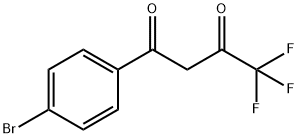
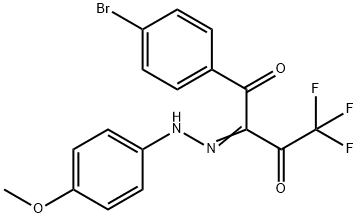
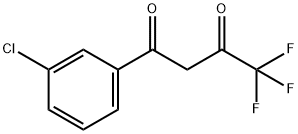
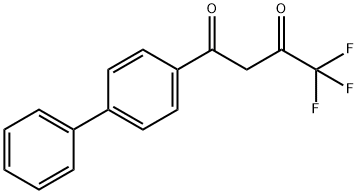
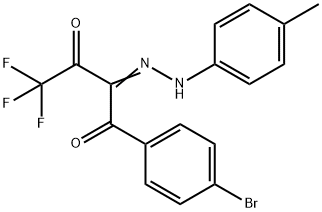
You may like
-
 Benzoyl-1,1,1-trifluoroacetone 97% CAS 326-06-7View Details
Benzoyl-1,1,1-trifluoroacetone 97% CAS 326-06-7View Details
326-06-7 -
 4,4,4-Trifluoro-1-phenyl-1,3-butanedione CAS 326-06-7View Details
4,4,4-Trifluoro-1-phenyl-1,3-butanedione CAS 326-06-7View Details
326-06-7 -
 4,4,4-Trifluoro-1-phenyl-1,3-butanedione CAS 326-06-7View Details
4,4,4-Trifluoro-1-phenyl-1,3-butanedione CAS 326-06-7View Details
326-06-7 -
 1823368-42-8 98%View Details
1823368-42-8 98%View Details
1823368-42-8 -
 2-(3-(tert-butyl)phenoxy)-2-methylpropanoic acid 1307449-08-6 98%View Details
2-(3-(tert-butyl)phenoxy)-2-methylpropanoic acid 1307449-08-6 98%View Details
1307449-08-6 -
 Ethyl 3-(furan-2-yl)-3-hydroxypropanoate 25408-95-1 98%View Details
Ethyl 3-(furan-2-yl)-3-hydroxypropanoate 25408-95-1 98%View Details
25408-95-1 -
 2-Chloro-5-fluoro-1-methoxy-3-methylbenzene 98%View Details
2-Chloro-5-fluoro-1-methoxy-3-methylbenzene 98%View Details
1805639-70-6 -
 Lithium ClavulanateView Details
Lithium ClavulanateView Details
61177-44-4
Statement: All products displayed on this website are only used for non medical purposes such as industrial applications or scientific research, and cannot be used for clinical diagnosis or treatment of humans or animals. They are not medicinal or edible.